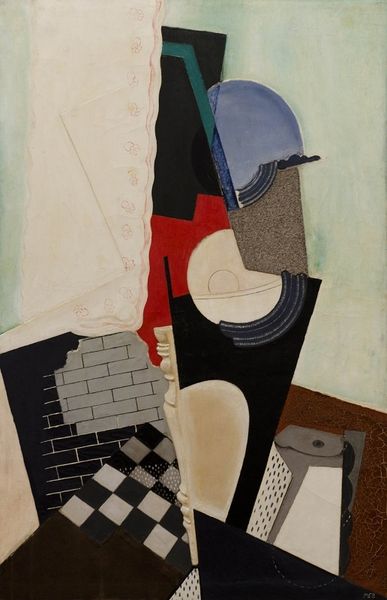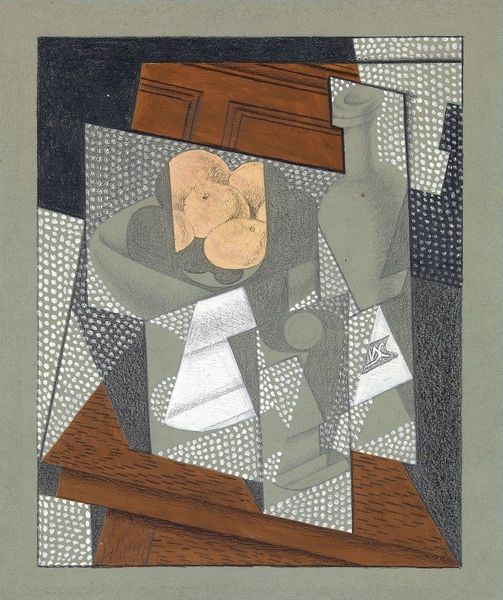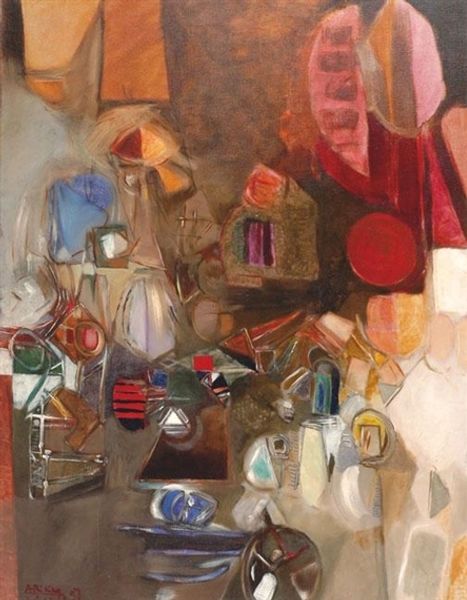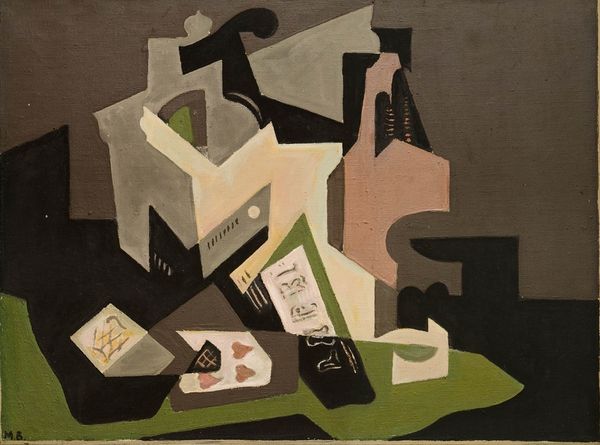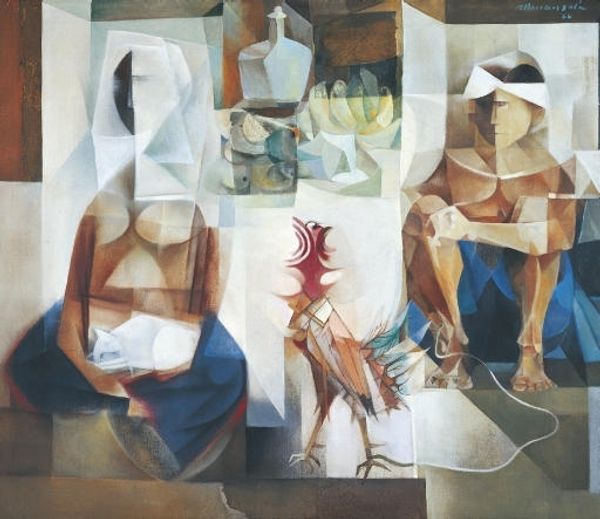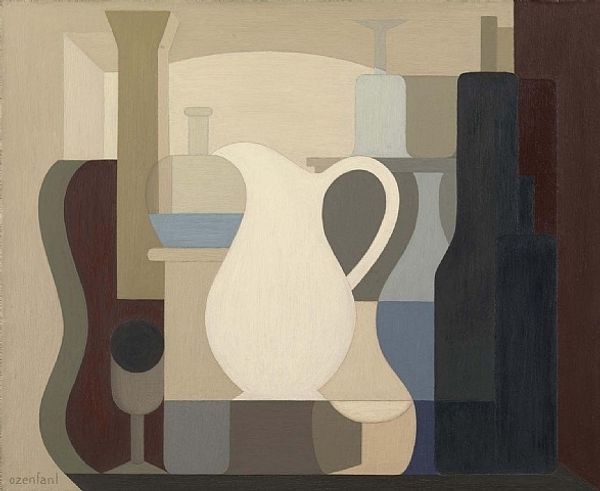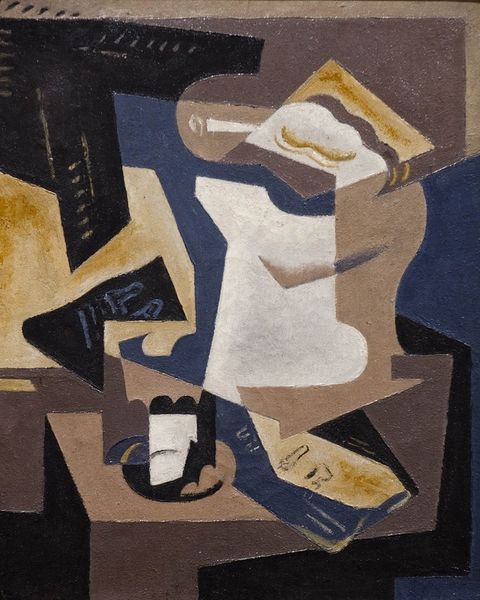
mixed-media, painting, oil-paint
#
cubism
#
mixed-media
#
painting
#
oil-paint
#
oil painting
#
geometric
#
abstraction
#
mixed media
#
modernism
#
watercolor
Copyright: Public domain US
Editor: This is Picasso’s "Still Life with Compote and Glass," painted in 1914. It's a mixed-media piece that feels like a puzzle of textures and fractured forms. It's intriguing but a bit chaotic to my eye. How do you interpret this work? Curator: The seeming chaos is, for me, its strength. Consider the historical moment. Europe, on the brink of World War I, faced radical shifts in societal structures and ways of thinking. Cubism, and this painting, reflect that disruption. What looks like fragmentation is a dismantling of traditional representation. Editor: So, the broken-up imagery is intentional, a reflection of the times? Curator: Precisely! Think about what Picasso is doing to our perception. He isn't just painting what he sees; he's painting what he *knows* is there from multiple perspectives, simultaneously. He’s collapsing the traditional hierarchies, inviting the viewer to reconstruct the reality, much like society was being asked to rebuild itself. And look at the newspaper clipping. Why do you think that might be included? Editor: To add another layer of reality? To remind us of the current events seeping into everyday life, even into still life? Curator: Exactly! It blurs the line between art and reality, forcing us to confront the social and political context. Also, it brings a hint of the cultural discourse that helps reflect the tensions, debates, and struggles defining Parisian identity and Picasso’s. What do you think of the way objects traditionally seen as feminine and passive—like fruit and glassware— are fragmented? Editor: It’s interesting. It challenges the conventional role assigned to these objects, just as women were beginning to challenge societal expectations. Maybe it isn't just about still life but still life. It’s more symbolic, more layered, right? Curator: Absolutely. By deconstructing these everyday objects, Picasso is implicitly deconstructing the societal norms they represent. It compels us to see beyond the surface. Editor: Wow, I hadn't considered it that way. Seeing it as a commentary on society, and gender roles, shifts everything. Curator: That's the power of situating art within its broader context. It becomes a mirror reflecting our own biases and assumptions.
Comments
No comments
Be the first to comment and join the conversation on the ultimate creative platform.

